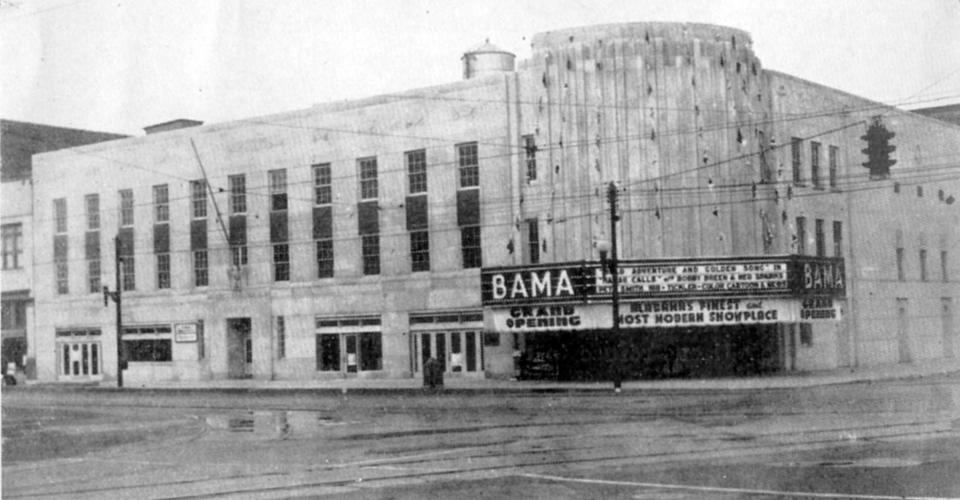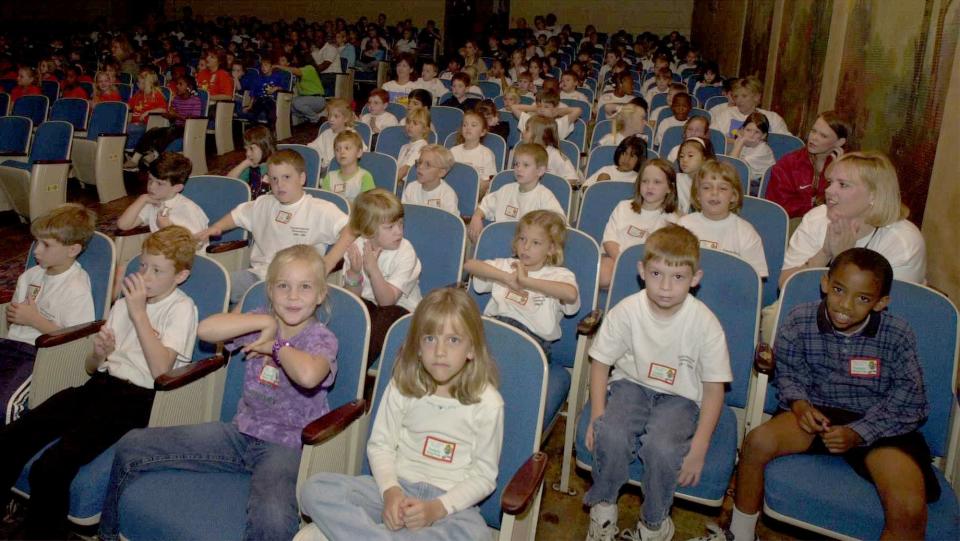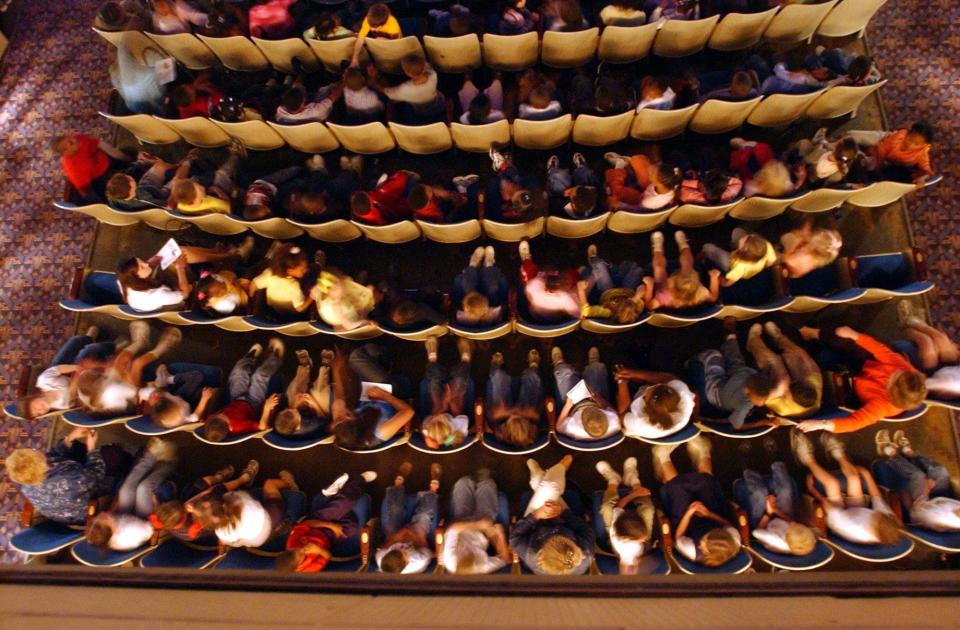Timeline of events in the 84-year history of the Bama Theatre
- Oops!Something went wrong.Please try again later.
Major events in the history of the Bama Theatre:
• 1937: Construction begins on the Tuscaloosa City Hall complex, which includes as its central auditorium the Bama Theatre. Funding comes from the Public Works Administration, an FDR-New Deal project to increase employment and enrich communities. The total cost was $200,000, in 1930s dollars.
• 1938: Bama Theatre/City Hall complex completed. It includes city offices under the same roof, and three retail spaces. It's the first public building in Tuscaloosa with a true air-conditioning system. Opening day, April 12, includes a parade, and a showing of the screwball comedy "Bringing Up Baby," starring Cary Grant and Katherine Hepburn. A banner strung outside declares the Bama “Alabama’s Finest and Most Modern Showplace."

• 1970: The Arts Council receives articles of incorporation. First co-chairs are performer and businesswoman Doris Leapard, and Allen Bales, head of the University of Alabama speech department. Also in that first Arts Council were Louise Temerson, Morris Sokol, Jack Warner, Fred Prentice, Mrs. Eric Baklanoff, Phoebe Barr, and John Ross.
• 1973: City offices relocate. Building purchased by Gilbreath Engineering.
• 1976: The building is leased to the Arts Council of Tuscaloosa, as a joint project between Tuscaloosa County Park and Recreation Authority (PARA), and the University of Alabama. Work to transform the space for performing arts includes extending the stage into the audience, which requires removing some seats. Including the balcony, it still has seating for a little more than 1,000. Over the decades it hosts concerts, lectures, readings, theater, dance and more, with stars including the Police, Joan Baez, Judy Collins, Alabama Shakes, Ryan Adams, John Prine, Cab Calloway, Robert Palmer, Burl Ives, Ramsey Lewis, Lily Tomlin, Richard Thompson, The Drive-By Truckers, Aimee Mann, Todd Snider, the Avett Brothers, Bela Fleck, Vincent Price, Leon Redbone, Artie Shaw and Glenn Miller orchestras, and many more. The Bama also plays hosts to one-night events such as a live broadcast of NPR’s “Wait Wait, Don’t Tell Me," and the world premiere of John Sayles’ film “Honeydrippers," shot in Alabama. The Mystic Krewe of the Druids’ holds its annual Mardi Gras Ball fundraiser there, and the Pink Box Burlesque's "Rocky Horror Picture Show" becomes a Halloween annual. Writers reading and performing there include Neil Gaiman, Margaret Atwood, Barry Hannah, Lynda Barry and Audrey Niffenegger.
• 1978: First schools program director hired.

• 1980: PARA purchases the building.
• 1983: The Junior League Gallery opens on the second floor of the Bama, leading into the balcony, becoming home to ongoing visual arts exhibits, sponsored by the Junior League of Tuscaloosa.
• 1984: New seats are installed.

• 1986: Major renovations, overseen by the Arts Council, are completed.
• 1996: Fitts Architects oversees an expansion of the old movie box office into a larger enclosed area, extending out under the marquee.
• 1999: After Theatre Tuscaloosa, which had been a major renter of the Bama, moves to its own new facilities at Shelton State Community College, the Arts Council moves to begin showing films again, on the nights when other companies aren't renting the venue. A fundraising campaign helps buy a 35mm film platter system. The series begins as oldies, but after breaking records with "Life is Beautiful," converts to more indie and foreign films, first as Cinema Nouveau, then the Bama Art House Series.
• 2007: Air-conditioning systems replaced, at a cost of about $100,000.
• 2013: Interior murals by Navino Nataloni are restored to their former beauty, by local artist Ruth Jatib O’Connor.

• 2015: Recognizing the digital movie revolution is here to stay, the Bama invests in a Proludio digital film projection system to replace the film projector.
• 2017: The marquee is upgraded with an LED board, but keeping the original frame, side, and surrounding lighting.
• 2022: The Arts Council closes the Bama during summer, in order to remove old seats, refurbish concrete, replace wiring, and add new carpeting and seating.
This article originally appeared on The Tuscaloosa News: Bama Theatre timeline 84-year history of events

